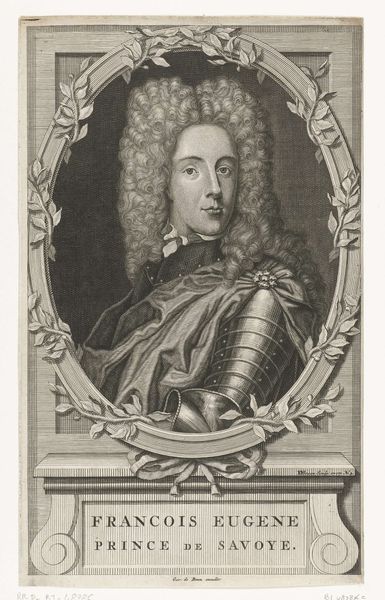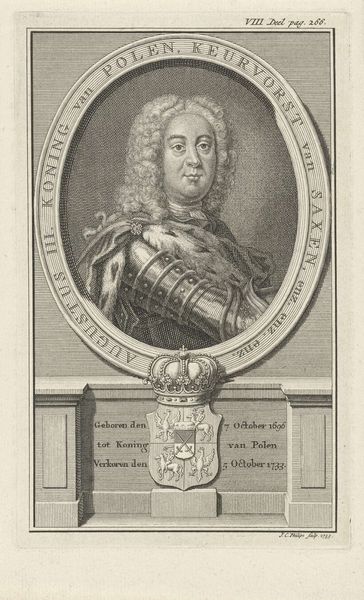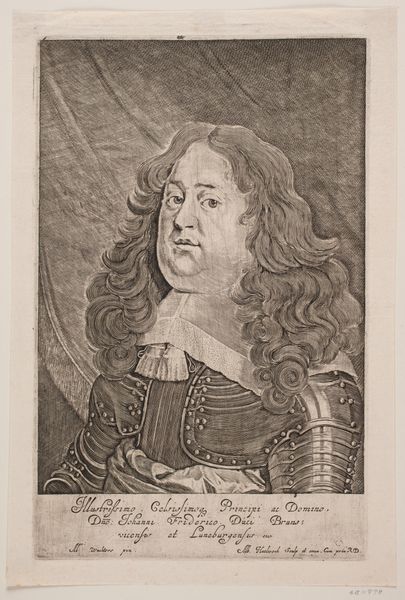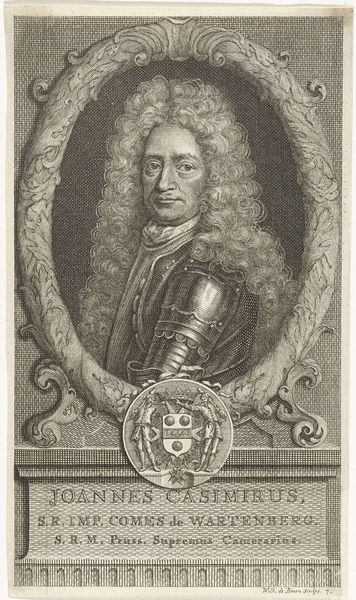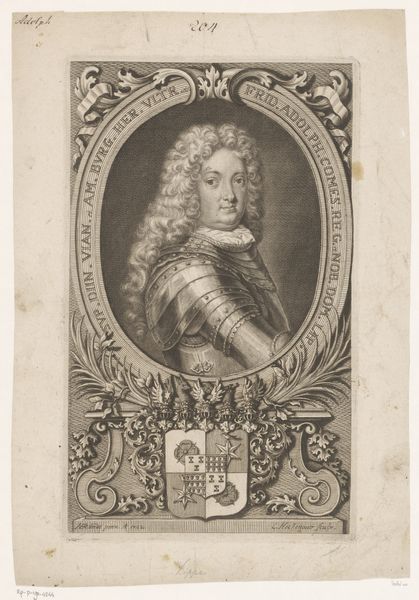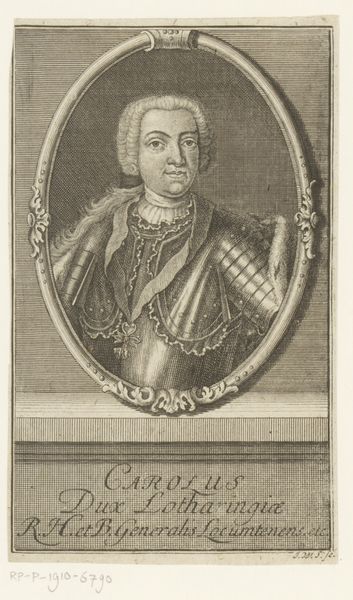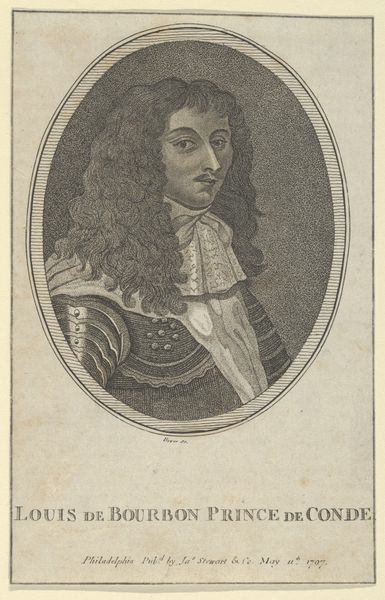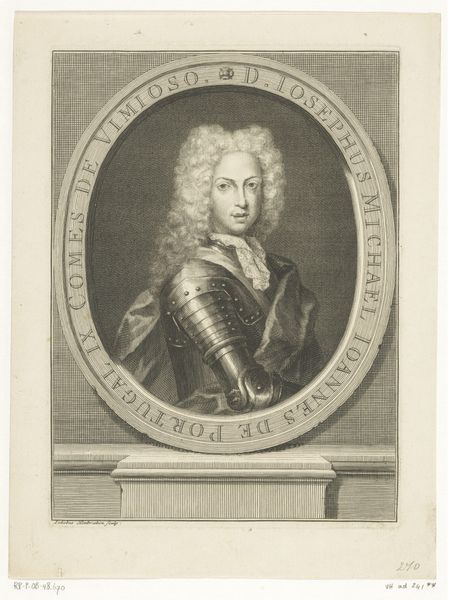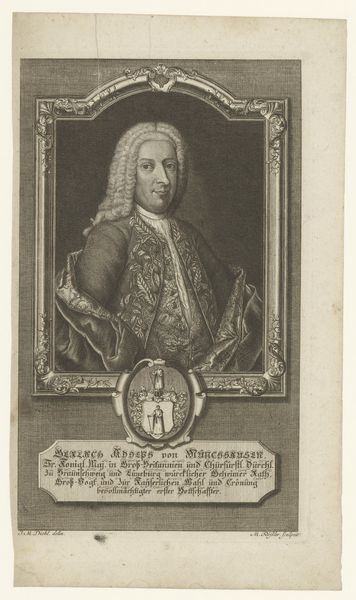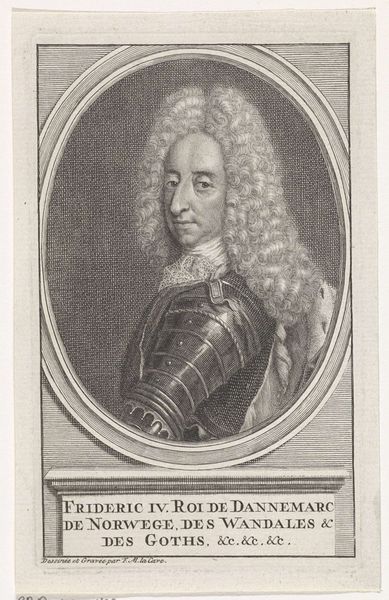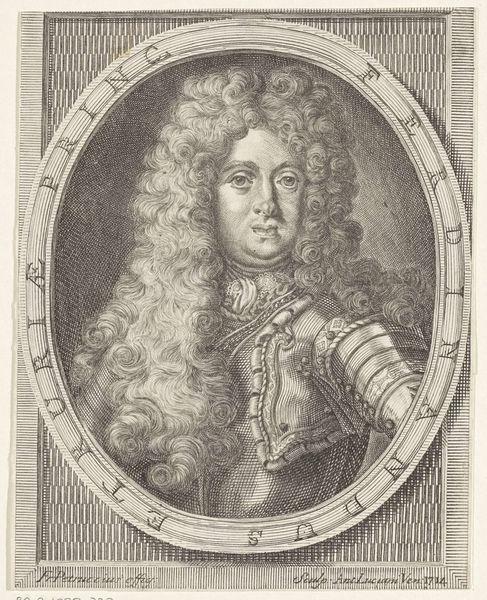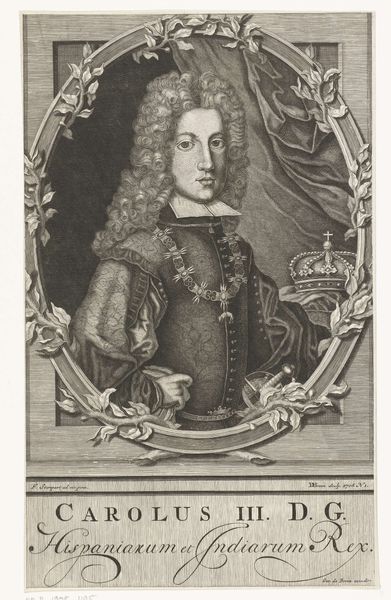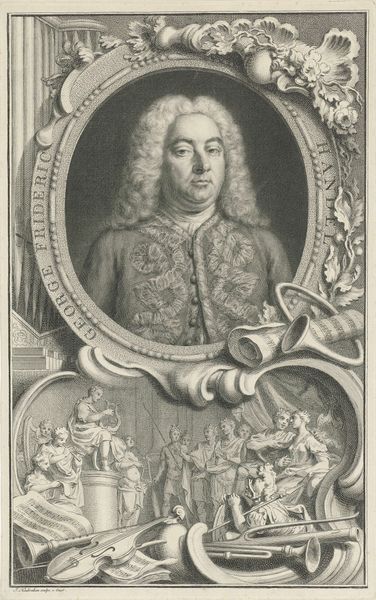
print, engraving
#
portrait
#
baroque
# print
#
old engraving style
#
old-timey
#
19th century
#
history-painting
#
engraving
Dimensions: height 157 mm, width 93 mm
Copyright: Rijks Museum: Open Domain
Johann Wilhelm Stör created this print of Francis I, the Holy Roman Emperor, during the 18th century. It offers a window into the self-fashioning of European monarchs and the strategies of image-making employed to bolster their authority. Consider how the portrait constructs meaning. The armor evokes military strength and recalls earlier traditions of warrior-kings, yet the elaborate wig signals adherence to the courtly fashions of the time. The ermine trim also indicates his social standing. Made in the Holy Roman Empire, this image would have served to reinforce Francis I’s legitimacy within a complex network of political power. To fully understand this portrait, we can explore the history of the Habsburg dynasty, the visual language of Baroque portraiture, and the role of printed images in disseminating power. Art history shows that a portrait like this offers insights into the social and institutional contexts that shaped its creation and reception.
Comments
No comments
Be the first to comment and join the conversation on the ultimate creative platform.
